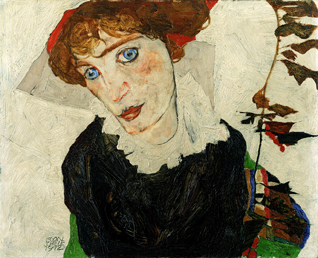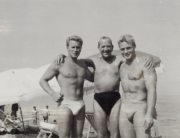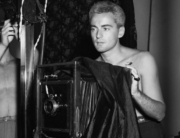
Egon Schiele's PORTRAIT OF WALLY, 1912 (The Leopold Museum)
Portrait of Wally is a real-life thriller that starts out as an historical legacy from the Holocaust, then ratchets up into a contemporary scandal with rich villains suavely sure they can outlive the people they cheated.
The story would be less fascinating if it was only about the recovery of a beautiful painting seized by Nazis as they ran over Europe’s cultural heritage, wholesale thefts memorably outlined in the documentary The Rape of Europa (2006). But from the time Jewish gallery owner Lea Bondi fled Vienna in 1939 to London after the forced sale of her collection, she tried to track what happened to her favorite painting, Egon Schiele’s 1912 portrait of his lover Walburga Neuzil. Bondi, one of the few champions of the Austrian artist (who died of the flu in 1928), kept writing until her death in 1969 for help in finding her missing piece.
While her family continued the search for decades, Schiele’s creations have been fetching up to $40 million into the 21st century. This documentary suspensefully mounts evidence that the same collectors who basked in the reflected glory of the rising value of Schiele’s works set up an elaborate conspiracy to keep secret how this work was obtained, manipulated the art historical records to cover it up, and then dragged out an unprecedented U.S. government lawsuit for 13 years that finally wrangled acknowledgement of the family’s rights.
Director Andrew Shea zags between duplicity on two parallel trails: the postwar acquisition of the portrait by Nazi collaborators in Austria, and the legal fight when it was exhibited at New York’s Museum of Modern Art in 1997 and blocked from leaving the country. They share a link, Austrian Rudolf Leopold, who amassed the world’s largest private collection of Schiele’s work, with the complicity of the Austrian government. He wrote a self-serving catalogue raisonné to make his version of the chain of ownership accepted historical fact—even as Bondi asked for his help to recover her painting from a country she had no wish to ever see again. Descendants of Bondi and her allies, a whistleblowing art dealer, prosecutors, and journalists help to uncover more and more details behind the glittering cocktail parties of the wealthy, while never losing sight of the difficult circumstances of Schiele and the woman who loved looking at Portrait of Wally in her living room.
One journalist, the film’s co-writer David D’Arcy, alleges that his dogged reporting on how major American museums ganged up against the lawsuit led to the end of his career with National Public Radio. Even as he trumpets his vindication, the film acts too shocked, shocked to discover the conflicted interests of rich entrepreneurs who are also nonprofit museum board members, a connection already excoriated in Don Argott’s Art of the Steal (2009). But the position of Ronald Lauder against the return of the painting to its original owner’s estate does seem particularly dubious. He’s a leading collector of Austrian art for his own museum (for which he purchased the returned Klimt portrait featured in The Rape of Europa), and chairman of both MoMA and the Commission for Art Recovery, which lobbies and litigates for the return of art that Nazis stole from Jews. (He declined to be interviewed for the film.)
The case was an important precedent to put teeth into the focus on looted art, and not just from the Nazi era, while exposing the questionable practices of international collectors, dealers, and museums. However, the documentary only alludes to those broader ramifications with confusing montages of headline accusations against the Getty and other institutions, without explaining the expanded Art Loss Register that now tracks all kinds of stolen art. (A panel discussion following the film’s world premiere at the Tribeca Film Festival dealt with some of these larger issues.)
One of the many queasy ironies is the grin on the face of Leopold’s widow as she welcomes the portrait back to her husband’s government-supported museum, brushing aside the $19 million he finally agreed to pay in 2010 to settle the case and the mandated exhibit label about its true history. That becomes just so much small print compared to the palette of issues this portrait of a beautiful, mysterious woman has stirred up.






Leave A Comment